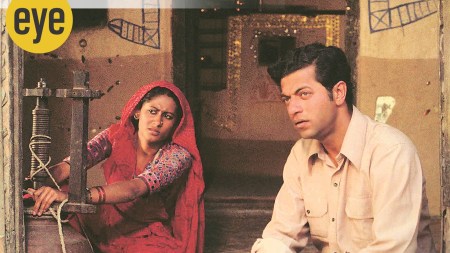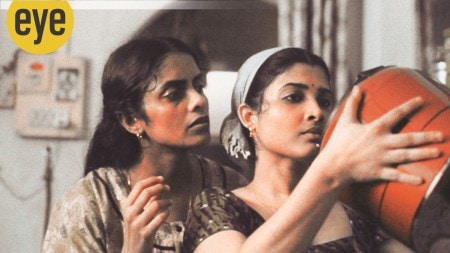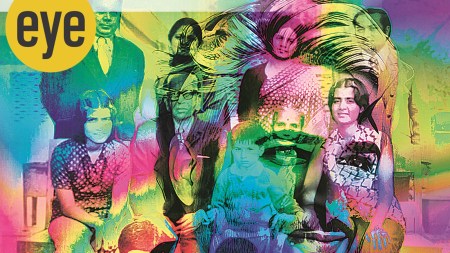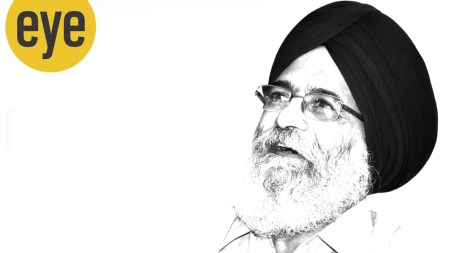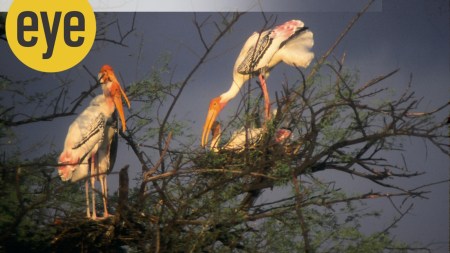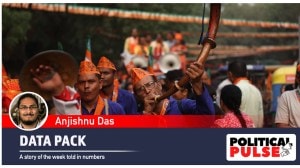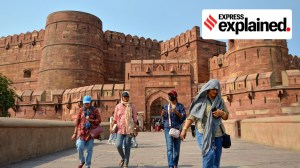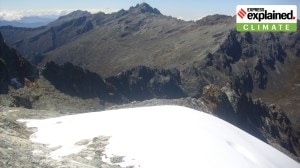- India
- International
UPSC Key | Artificial General Intelligence, Tiger translocation, India-Myanmar Relations and more
Exclusive for Subscribers from Monday to Friday: How are Artificial General Intelligence and Tiger translocation relevant to the UPSC Exam? What significance do topics like India-Myanmar relations and Dengue have for the preliminary and main exams? You can learn more by reading the Indian Express UPSC Key for May 6, 2024.

Important topics and their relevance in UPSC CSE exam for May 6, 2024. If you missed the May 3rd, 2024 UPSC CSE exam key from the Indian Express, read it here.
🚨 The Indian Express UPSC Essentials brings to you the April edition of its monthly magazine. Click Here to read. Share your views and suggestions in the comment box or at manas.srivastava@indianexpress.com🚨
Explained
What is Artificial General Intelligence (AGI), and why are people worried about it?
Syllabus:
Preliminary Examination: Current events of national and international importance.
Mains Examination: GS-III: Awareness in the fields of IT, Space, Computers, robotics, nano-technology, bio-technology and issues relating to intellectual property rights.
What’s the ongoing story- In a recent interview, Sam Altman, CEO of OpenAI, expressed his commitment to invest billions of dollars towards the development of Artificial General Intelligence (AGI). But even as Altman continues to champion what is considered to be the pinnacle of AI development, many in the global tech community are very apprehensive.
Prerequisites:
— What is artificial intelligence (AI)?
— What are the areas of AI application?
— What are the different categories of AI?
Key takeaways:

— AGI refers to a machine or a software that can perform any intellectual task that a human can do. AGI aims to emulate human cognitive abilities such that it allows it to do unfamiliar tasks, learn from new experiences, and apply its knowledge in new ways.
— The main difference between AGI and the more common form of AI, also known as narrow AI, lies in their scope and capabilities.
— Narrow AI is designed to perform specific tasks such as image recognition, translation, or even playing games like chess—at which it can outdo humans, but it remains limited to its set parameters. On the other hand, AGI envisions a broader, more generalised form of intelligence, not confined to any particular task (like humans). This is what puts AGI at the summit of all developments in artificial intelligence.
— The idea of AGI first emerged in the 20th century with a paper written by Alan Turing, widely considered to be the father of theoretical computer science and artificial intelligence.
— In theory, AGI has innumerable positive implications in various fields such as healthcare, education, finance, and business.
— Despite the promise AGI holds, it continues to fuel widespread apprehensions, due to a number of reasons. For instance, the humongous amount of computational power required to develop AGI systems raises concerns about its impact on the environment, both due to the energy consumption and generation of e-waste. AGI could also lead to a significant loss of employment, and widespread socio-economic disparity.
— It could introduce new security vulnerabilities, and its development could outrun the ability of governments and international bodies to come up with suitable regulations. And if humans were to become dependent on AGI, it might even lead to the loss of basic human skills and capabilities. But the most serious fear regarding AGI is that its abilities can outpace human beings’, making its actions difficult to understand and predict.
Points to Ponder:
— What is the Turing test?
— What are the challenges associated with AGI?
— What are the benefits associated with AGI?
— Is there any legal framework for AI regulation globally and nationally?
— Why is AI regulation the need of the hour?
Post Read Question:
Prelims
With the present state of development, Artificial Intelligence can effectively do which of the following? (2020)
1. Bring down electricity consumption in industrial units
2. Create meaningful short stories and songs
3. Disease diagnosis
4. Text-to-Speech Conversion
5. Wireless transmission of electrical energy
Select the correct answer using the code given below:
(a) 1, 2, 3 and 5 only
(b) 1, 3 and 4 only
(c) 2, 4 and 5 only
(d) 1, 2, 3, 4 and 5
Mains
“The development of full artificial intelligence could spell the end of the human race.” In light of this statement, analyse the risks associated with the new emerging technologies, such as AI and AGI.
Other Important Articles Covering the same topic:
Who determines when Artificial General Intelligence is achieved?
The dark side of AI: Its growing environmental footprint
Covid virus is still here. Why aren’t more people falling ill?
Syllabus:
Preliminary Examination: Current events of national and international importance.
Mains Examination: GS-II: Issues relating to development and management of Social Sector/Services relating to Health.
What’s the ongoing story- It seems like a distant memory now, but just three years ago, India was in the midst of its worst phase of the Covid-19 pandemic. The month of May 2021 saw more than 1.2 lakh deaths — around 20% of all deaths attributed to Covid in the country so far. Daily detections peaked exactly three years ago — on May 6, 2021 — when more than 4.14 lakh positive cases were reported. The crisis continued for at least two more months. Unlike many other countries, India did not face any more deadly Covid-19 waves.
Prerequisites:
— What are variants of SARS-CoV-2, the virus that causes COVID-19?
— What do you understand by the global public health emergency?
— Read about the World Health Organization (WHO).
Key takeaways:
— On May 5, 2023, the WHO announced that Covid-19 was no longer a global public health emergency. It was an acknowledgment that the uncontrolled spread of the virus was over. The declaration was seen as a formal end to the pandemic.
— However, SARS-CoV-2, the virus that caused the Covid-19 disease, remains very much in circulation — and continues to cause infections and even some deaths. The dominant variant causing the most infections right now is JN.1, a distant descendant of Omicron. JN.1 is a little more efficient at infecting people than its sister variants, but, like all descendants of Omicron, does not cause severe disease.
— The Omicron variant, which emerged at the end of 2021, had enhanced capability to spread and infect people, but it did not cause severe disease. A large proportion of the world’s population gained natural immunity after being infected with Omicron. By the end of 2021, more than half the global population had also received one or the other vaccine, which strengthened their immunity.
– However, neither natural infection nor vaccines provide permanent immunity. The effect of vaccines taken in 2021 and 2022 is most likely over. Natural immunity also dissipates after some time. The only reason there is no uncontrolled surge is that people are continuing to get infected with relatively harmless variants, and getting their immunity renewed.
For Your Information:
— Herd immunity refers to preventing an infectious disease from spreading by immunising a certain percentage of the population. While the concept is most commonly used in the context of vaccination, herd community can also be achieved after enough people have become immune after being infected.
Points to Ponder:
— What is the difference between variants under monitoring, variants of interest, and variants of concern?
— What is the Disaster Management Act?
— How did Omicron emerge? What makes it different from previous variants of Covid-19?
— What are the different types of COVID-19 vaccines?
Post Read Question:
Prelims
In the context of vaccines manufactured to prevent the COVID-19 pandemic, consider the following statements: (2022)
1. The Serum Institute of India produced a COVID-19 vaccine named Covishield using an mRNA platform.
2. The Sputnik V vaccine is manufactured using a vector-based platform.
3. COVAXIN is an inactivated pathogen-based vaccine.
Which of the statements given above are correct?
(a) 1 and 2 only
(b) 2 and 3 only
(c) 1 and 3 only
(d) 1, 2 and 3
Mains
COVID-19 pandemic accelerated class inequalities and poverty in India. Comment. (2020)
Other Important Articles Covering the same topic:
Experts Explain: Viruses, their variants, and vaccines
UPSC Essentials | One word a day — JN.1, the new COVID-19 sub-variant
Latin America’s dengue spike
Syllabus:
Preliminary Examination: Current events of national and international importance.
Mains Examination: GS-II: Issues relating to development and management of Social Sector/Services relating to Health.
What’s the ongoing story- Cases of dengue in Latin America and the Caribbean are skyrocketing. Between January and April 2024, the region has seen more than 5.9 million cases compared to 4.4 million in all of 2023. While some countries are witnessing a surge in dengue much before the peak season, others are recording severe outbreaks for the first time.
Prerequisites:
— What is Dengue?
— Which virus causes dengue?
Key takeaways:
— Brazil is the worst affected country in the region. Several of the country’s states (there are 26 in total) have declared a state of emergency.
— The key driver behind the rising dengue cases is soaring temperatures. In the past 30 years, the region has warmed an average of 0.2 degree Celsius per decade, according to the State of the Climate in Latin America and the Caribbean 2022 report. This has not only led to more frequent and intense extreme weather events but also an increase in the mosquito population.
— Most of the mosquito species thrive in warmer temperatures and with global warming the areas where they can breed and survive have increased, including in Latin America and the Caribbean. Higher temperatures have also extended the length of the season when mosquitoes are active, allowing a longer period for the transmission of vector-borne diseases.
— Extreme weather events have further multiplied the mosquito population. Untimely rainfall, storms, flooding, and rising sea levels create shallow, stagnant pools of water in which the bugs thrive. On the other hand, droughts lead people to collect and save water in containers that provide breeding places for mosquitoes. Rapid urbanisation is another factor.
— The world is yet to roll out a highly effective dengue vaccine that can stop the spread at a large scale.
— Dengue is spread when bitten by a female mosquito of Aedes genus and there are four strains of the dengue virus, which is a daunting challenge for scientists.Although scientists have created vaccines that protect against the four strains, they are either expensive or have serious limitations.
Points to Ponder:
— How extreme weather events have further multiplied the mosquito population?
— Is there any vaccine for dengue in India?
— What are the vector-borne diseases in India?
— What is the National Vector Borne Diseases Control Programme (NVBDCP)?
Post Read Question:
Which of the following diseases can be transmitted from one person to another through tattooing? (2013)
1. Chikungunya
2. Hepatitis B
3. HIV-AIDS
Select the correct answer using the codes given below:
(a) 1 only
(b) 2 and 3 only
(c) 1 and 3 only
(d) 1, 2 and 3
Other Important Articles Covering the same topic:
Explained: Dengue fever, how it spreads and how it can be controlled
Express Network
Maharashtra gears up for tiger translocation to Sahyadri reserve in bid to revive numbers
Syllabus:
Preliminary Examination: General issues on Environmental ecology, Bio-diversity and Climate Change – that do not require subject specialization.
Mains Examination: GS-III: Conservation, environmental pollution and degradation, environmental impact assessment.
What’s the ongoing story- The Maharashtra forest department is gearing up for translocation of a few tigers from the Tadoba-Andhari Tiger Reserve (TATR) in Chandrapur to Sahyadri, the lone tiger reserve in the state’s western region.
Prerequisites:
— What is the protection status of tiger?
— What is India’s tiger population? How many tiger reserves are in India?
— Read about the National Tiger Conservation Authority (NTCA).
— What is the Wildlife Protection Act?
— Map work: Tadoba-Andhari Tiger Reserve (TATR), Sahyadri Tiger Reserve (STR), Kaval Tiger Reserve, Dampa Tiger Reserve, Kamlang Tiger Reserve, Satkosia Tiger Reserve, Chandoli National Park, Koyna Wildlife Sanctuary, Locate the top five and bottom five states (population) of Tiger Reserves in India, Western Ghats. (Refer Atlas)
Key takeaways:
— The Sahyadri Tiger Reserve (STR) is one of only five tiger reserves in the country — Kaval in Telangana, Kamlang in Arunachal Pradesh, Dampa in Mizoram and Satkosia in Odisha being the other four — with zero tigers within the reserve and the translocation is part of a long-term plan to revive the population of the big cats in the northern Western Ghats forests.
— STR straddles Kolhapur, Satara, Sangli and Ratnagiri districts in western Maharashtra. Spread over 1,165 sq km, the reserve was notified in 2010 by amalgamating the Chandoli national park and Koyna wildlife sanctuary.
— The Maharashtra forest department is awaiting the final go-ahead from the Union Environment Ministry. The NTCA had cleared the translocation plan in October 2023. In the initial phase, a male tiger or a pair of male and female tigers would be translocated from TATR to STR.
— The translocation project is an important step in conservation of tigers in the forests of the northern Western Ghats, which form a key wildlife corridor between Maharashtra and Karnataka.
— The 2023 tiger population estimation report highlighted the threats posed to the wildlife corridor between the STR and Karnataka’s forests from mining activities, road projects and human settlements.
— The translocation of tigers from TATR will be followed by their translocation from the Pench Tiger Reserve landscape, which is spread over Maharashtra and Madhya Pradesh. In all, the plan involves translocation of eight tigers — three males and five females.
— The translocation is part of the phase-II of the tiger recovery project; phase-I involves preparing the habitat for the big cats’ reintroduction, augmentation of prey, improving forest protection and building of a temporary enclosure for their soft release.
Points to Ponder:
— What is the significance of ‘Project Tiger’?
( Thought Process: What is Project Tiger? In which year did it begin? Where was it launched? How successful has it been, and what have been the setbacks? )
— What are the persisting threats facing the tiger across its habitats?
— What are the challenges associated with the translocation of tigers?
— What is the “Status of Tigers in India” report?
— What are the initiatives taken by the government for tiger conservation?
— What is the International Big Cat Alliance (IBC)?
Post Read Question:
Among the following Tiger Reserves, which one has the largest area under “Critical Tiger Habitat”? (2020)
(a) Corbett
(b) Ranthambore
(c) Nagarjunasagar-Srisailam
(d) Sundarbans
Other Important Articles Covering the same topic:
Fifty years of ‘Project Tiger’: How the programme saved Indian tigers
Front Page
I-T clause to ensure MSMEs are paid on time creates hurdle
Syllabus:
Preliminary Examination: Economy
Mains Examination: GS-III: Indian Economy and issues relating to planning, mobilization, of resources, growth, development and employment.
What’s the ongoing story- A new provision in the Income-Tax Act in Budget 2023-24 that aimed to secure payments to micro, small and medium enterprises (MSMEs) within 45 days of supply of goods or services has resulted in a peculiar problem — that of large companies canceling orders to registered MSMEs and placing these with unregistered MSMEs.
Prerequisites:
— What are Medium, Small, and Micro Enterprises (MSMEs)?
— How are MSMEs defined?
— What is the Udyam portal?
Key takeaways:
— While some MSME associations have approached the Supreme Court against the new norm, the Union MSME Ministry is learnt to have reached out to industry players for solutions. It has asked stakeholders to suggest ways to resolve the issues arising from the I-T Act and to recommend possible alternate mechanisms for timely clearance of MSME bills.
— The new provision has also unintentionally resulted in a competition between registered and unregistered MSMEs, with many smaller entities opting to de-register themselves to survive and not lose business.
— Section 15 of the MSMED Act mandates payments to MSMEs within the time period of 45 days as per the written agreement. If there is no such written agreement, the payment needs to be made within 15 days.
— Tax experts are of the view that the payment timelines are unrealistic and the government needs to reconsider extending it to at least the time of filing of returns rather than at the end of a financial year.
Points to Ponder:
— What is the status of the MSME sector in India?
— What are the challenges faced by MSMEs in India?
— What is the significance of the MSME sector for India’s economic growth and self-reliance?
— What are the initiatives taken by the government to support the growth of MSMEs?
(Thought Process: Read about the RAMP Scheme, ASPIRE Scheme, Zero Defect and Zero Effect, Credit Guarantee Trust Fund for Micro and Small Enterprises (CGTMSE), Credit Linked Capital Subsidy for Technology Upgradation (CLCSS), PLI Scheme, etc.)
Post Read Question:
Consider the following statements with reference to India : (2023)
1. According to the ‘Micro, Small and Medium Enterprises Development (MSMED) Act, 2006, the ‘medium enterprises’ are those with investments in plant and machinery between `15 crore and `25 crore.
2. All bank loans to the Micro, Small and Medium Enterprises qualify under the priority sector.
Which of the statements given above is/are correct?
(a) 1 only
(b) 2 only
(c) Both 1 and 2
(d) Neither 1 nor 2
Other Important Articles Covering the same topic:
Union Budget 2024: Expectations of MSMEs and private businesses
The Editorial Page
Look East
Syllabus:
Preliminary Examination: Current events of national and international importance.
Mains Examination: GS-II: India and its neighbourhood- relations.
What’s the ongoing story- Despite its profound impact on India’s internal and external security, there has been little debate in Delhi on how to deal with the Myanmar crisis. The time has come for the Indian government to rethink its earlier policy bias in favour of Myanmar’s army which is no longer in a position to secure India’s interests.
Prerequisites:
— Read about the Border Guard Force (BGF) of Myanmar.
— What are the Bamars and ethnic minority groups in Myanmar?
— What is the Look East Policy of India? How is the Act East Policy different from it?
— What is ASEAN?
— Map work: check the location of Myanmar, countries sharing a border with it, Indian States sharing a border with Myanmar, major rivers in Myanmar, and other important details, ASEAN countries. (Refer Atlas)
Key takeaways:
— Last week, Myanmar’s army claimed success in retaking Myawaddy, a critical node in the bustling trade route with its eastern neighbour, Thailand. The real winner in the see-saw battle now appears to be the notorious BGF. The BGF is reportedly playing both sides in order to expand its own regional dominance.
— Since its independence, Myanmar never enjoyed sustained control over all its territory. The conflict between the majority Bamars and several ethnic minority groups has left the state’s control over its frontiers shaky.
— While the main regional forum ASEAN has been unable to deal with the challenges, the great powers are stepping in. In the name of stabilising its frontier with Myanmar, China has inserted itself deeper into the nation’s internal affairs. The US supports the country’s pro-democracy movement and has given nearly $500 million assistance under the Burma Act of 2021.
— In the given context, Delhi must now begin a dialogue with Myanmar’s National Unity Government comprising the democratic opposition and the ethnic armed groups. While it should engage with the Army, of course, New Delhi must also open channels of communication with the local forces in control of the regions across the 1,600-km long land border with Myanmar. Playing defence by fencing the border with Myanmar is utterly inadequate in coping with the challenge on India’s eastern frontier.
For Your Information:
— The border between India and Myanmar runs for 1,643 km in the four states of Mizoram, Manipur, Nagaland, and Arunachal Pradesh.
Points to Ponder:
— What is the history of India-Myanmar bilateral relations?
— What are the key issues in India-Myanmar relations?
— What is the Free Movement Regime on the India-Myanmar Border?
— What is the India-Myanmar-Thailand Trilateral Highway?
— What is the Kaladan Multimodal Transit Transport Project?
— Since the coup in Myanmar, how has India taken a diplomatic approach to Myanmar?
Post Read Question:
Prelims
In the Mekong-Ganga Cooperation, an initiative of six countries, which of the following is/are not a participant/ participants? (2015)
1. Bangladesh
2. Cambodia
3. China
4. Myanmar
5. Thailand
Select the correct answer using the code given below:
(a) 1 only
(b) 2, 3 and 4
(c) 1 and 3
(d) 1, 2 and 5
Mains
Analyze internal security threats and transborder crimes along Myanmar, Bangladesh and Pakistan borders including Line of Control (LoC). Also, discuss the role played by various security forces in this regard. (2020)
Other Important Articles Covering the same topic:
The Ideas Page
The Hard Truth
Syllabus:
Preliminary Examination: Economic and Social Development
Mains Examination: GS-III: Indian Economy and issues relating to planning, mobilisation, of resources, growth, development, and employment.
What’s the ongoing story- Vikram S Mehta writes: “It has never been easy to call the timing and rate of change of oil prices. This is because they are influenced by the non-fundamentals of geopolitics, exchange rates, speculators, and the predilections of corporate and political leaders.”
Prerequisites:
— What is shale gas?
— What are the net-zero carbon emission targets?
— Location of the Straits of Hormuz
— Which are the petroleum-producing nations?
Key takeaways:
— “The US is the largest producer of petroleum liquids in the world and the biggest exporter of LNG. It has also allocated more money than any other government to reduce carbon emissions.”
— “The Russia-Ukraine war has boosted the profits of US petroleum companies. They have (predominantly) filled the vacuum created by the sanctions on exports of Russian gas and petroleum products into Europe.”
— “The Middle East is facing a witch’s brew of warfare, racism and radicalism but also houses 55 per cent of the world’s petroleum reserves. One misstep could result in the closure of the Straits of Hormuz through 30 per cent of internationally traded oil passes.”
— “International petroleum majors are posting strong profits due to increased oil and gas production and prices. However, most of their investable capital goes to fossil fuels, posing a challenge to their net zero carbon emission targets.”
— “Western sanctions on Venezuela, Iran and Russia have fragmented the petroleum market. Trading relations are predominantly regional, not global.”
— “The AI industry will need enormous amounts of electricity for its data centres, cloud storage facilities and crypto mining. Renewables will not be able to meet this requirement. Should they slow down their growth plans or turn to gas-based power generation for their requirements?”
— “It suggests that aside from geopolitics, exchange rates and Wall Street speculation, analysts should consider net zero carbon emission commitments and the AI industry’s demand for electricity as two additional non-fundamental factors that will bear on the international oil market.”
— “The lesson for oil import-dependent India is clear: Do not overread the market. Instead, hedge against volatility. Build up strategic oil reserves, increase the share of natural gas in the energy basket, invest in smart infrastructure, intensify R&D on clean energy, encourage public-private partnerships and scale up renewables.”
Points to Ponder:
— What are the initiatives taken by India to reduce its dependence on oil imports?
— What is the OPEC+?
— How are fuel prices determined in India?
— What are the geopolitical factors that are influencing petroleum prices in the world today?
— How can a developing nation like India achieve a balance between economic development and reducing carbon emissions?
(Thought Process: Cite data on India’s dependence on oil import–India on the path of becoming a 5 trillion economy—necessary to exploit its resources– need to balance the domestic petroleum exploration and zero-carbon emission target.)
Post Read Question:
Prelims
In the context of global oil prices, “Brent crude oil” is frequently referred to in the news. What does this term imply? (2011)
1. It is a major classification of crude oil.
2. It is sourced from North Sea.
3. It does not contain sulphur.
Which of the statements given above is/are correct?
(a) 2 only
(b) 1 and 2 only
(c) 1 and 3 only
(d) 1, 2 and 3
Mains
“Heavy reliance on imported crude oil makes the Indian economy vulnerable to global oil price volatility.” Discuss. Also, suggest measures to reduce the dependency.
Other Important Articles Covering the same topic:
India’s reliance on oil imports hits fresh full-year high in FY24
Iran-Israel conflict: Escalation could cast shadow on India’s oil trade
Jobs picture in perspective
Syllabus:
Preliminary Examination: Economic and Social Development
Mains Examination: GS-II, III: Government policies and interventions for development, Indian Economy and issues relating to planning, mobilisation of resources, growth,
development and employment.
What’s the ongoing story- Alakh N Sharma and Ravi Srivastava write: “The India Employment Report 2024, brought out by the Institute for Human Development (IHD) and the International Labour Organisation (ILO), has attracted widespread attention.”
Prerequisites:
— What is the Employment Condition Index?
— What are the Employment and Unemployment Surveys (EUS) and Periodic Labour Force Surveys (PLFS)?
— What is the female workforce participation (FWFP) ?
— What is underemployment?
Key takeaways:
— “The report highlights some major positive developments in the labour market.
(i) The employment quality, as shown by a robust Employment Condition Index, has improved in all states.
(ii) There is an increase in the share of non-farm employment (and a decline in agriculture employment) between 2000 and 2019.
(iii) There is steady increase in regular employment and a decline in unorganised sector employment.
(iv) The female workforce participation (FWFP) rate has increased from 24.5 per cent in 2019 to 37.0 in 2023 is quite remarkable.
(v) Even though there was a massive increase in farm jobs during the pandemic (almost 9 per cent per year), overall non-farm jobs also went up by more than 2.6 per cent, a rate higher than that achieved from 2012 to 2019.
(vi) The unemployment rate has declined from 6 per cent 2018 to 3.2 per cent in 2023.”
— “The report also outlines major emerging employment challenges in the wake of developments during the last two decades as well as distortions caused by the pandemic.
(i) The employment pattern remains skewed towards agriculture, which employs around 46.6 per cent workers.
(ii) The production process has been increasingly becoming capital and skill-intensive, leading to distortions in the labour market, where despite an increase in educational attainments, unskilled and semi-skilled workers abound.
(iii) Women’s participation is still low and they remain largely engaged in somewhat less remunerative jobs in agriculture, unpaid family work and as own-account workers.
(iv) Youth unemployment is the principal challenge.
— “Improving the quality of education and imparting appropriate skills in active partnership with the private sector will continue to be a priority in coming years.”
— “India is likely to have a demographic advantage for at least another decade. With robust economic growth likely to be witnessed in the coming years, the country can reap this advantage.”
For Your Information:
— “The report has recommended some policy measures such as:
(i)Emphasis on the growth of labour-based manufacturing and employment-generating services and agriculture.
(ii) Improving the quality of jobs
(iii) Overcoming labour market inequalities
(iv) Skill training and active labour market policies
(v) Generate reliable statistics”
Points to Ponder:
— What are the Government’s Initiatives Related to Employment?
— What steps need to be taken to increase Female labour force participation?
— How does India benefit from demographic dividends?
— How is unemployment measured in India?
Post Read Question:
The Indian Employment Report 2024 was published by which of the following organisation?
(a) World Bank
(b) Niti Aayog
(c) Transparency International
(d) Institute for Human Development
Other Important Articles Covering the same topic:
State of employment in India: What a new report says about youths and women, concerns and caution
UPSC Ethics and Essay Snippet
‘Wordly Wise’ from The Editorial Page
“There may be times when we are powerless to prevent injustice, but there must never be a time when we fail to protest.”
– Elie Wiesel
(Thought Process: What do you understand by the term ‘power’ and ‘justice’ and what is the connection between the two? Throughout history, protests have been very important for driving social movements, inspiring people and ensuring better future. Can you think of some examples? What are the different forms of protesting and where is it important to draw a line? What is the point of protest anyway? Is having the authority or power to prevent injustice the only way to ensure a just society, or is raising one’s voice against injustice equally important? Do you agree that freedom of speech and expression is the loudest voice against injustice? How can justice be achieved in the absence of freedom? Elaborate.)
Subscribe to our UPSC newsletter and stay updated with the news cues from the past week.
May 19: Latest News
- 01
- 02
- 03
- 04
- 05


